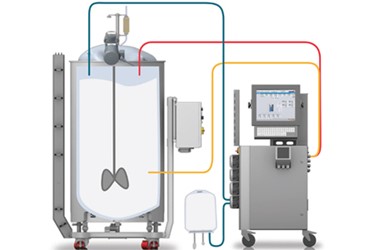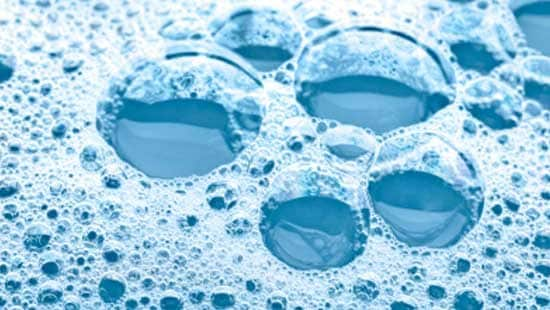Efficient Methods for Attaining Optimal Foam Control in Chemical Production
Effective foam control is a crucial element of chemical production that can substantially impact manufacturing efficiency and product top quality. By comprehending the systems of foam formation and selecting proper anti-foaming agents, manufacturers can take positive measures to reduce extreme foam. Furthermore, the execution of process optimization methods and advanced surveillance systems plays a vital function in keeping optimum operating conditions. The nuances of these strategies can vary extensively across various applications, increasing important inquiries concerning ideal techniques and real-world implementations that merit further exploration.
Recognizing Foam Formation

Surfactants, or surface-active representatives, decrease the surface tension of the fluid, assisting in bubble stability and advertising foam generation. Additionally, anxiety or mixing processes can enhance bubble formation, typically exacerbating foam concerns. The features of the fluid tool, including thickness and density, further influence foam actions; for instance, more thick fluids often tend to trap air better, resulting in increased foam security.
Understanding these essential elements of foam development is essential for effective foam control in chemical production. By identifying the conditions that advertise foam growth, makers can implement targeted techniques to reduce its unfavorable results, thus optimizing manufacturing procedures and making certain constant product top quality. This fundamental understanding is important prior to exploring certain approaches for controlling foam in industrial settings.
Choice of Anti-Foaming Agents
When picking anti-foaming agents, it is vital to think about the particular attributes of the chemical procedure and the kind of foam being generated (Foam Control). Numerous aspects affect the efficiency of an anti-foaming agent, including its chemical composition, temperature level security, and compatibility with other procedure materials
Silicone-based anti-foams are widely utilized because of their high performance and broad temperature level range. They function by reducing surface area tension, enabling the foam bubbles to integrate and break more quickly. They might not be appropriate for all applications, specifically those entailing sensitive formulas where silicone contamination is a concern.
On the various other hand, non-silicone representatives, such as mineral oils or natural compounds, can be helpful in specific scenarios, specifically when silicone deposits are unwanted. These agents have a tendency to be less effective at higher temperature levels but can supply reliable foam control in various other conditions.
In addition, recognizing the foam's beginning-- whether it arises from oygenation, anxiety, or chemical reactions-- overviews the selection process. Testing under actual operating problems is important to ensure that the chosen anti-foaming agent satisfies the distinct needs of the chemical manufacturing procedure successfully.
Refine Optimization Methods
Reliable foam control is a crucial aspect of maximizing chemical production procedures. To enhance efficiency and lessen manufacturing costs, suppliers must apply targeted process optimization strategies. One essential strategy involves changing blending arrangements and speeds. By fine-tuning these parameters, drivers can minimize turbulence, consequently minimizing foam formation during blending.
Furthermore, regulating temperature level and stress within the system can considerably impact foam generation. Lowering the temperature level might decrease the volatility of particular elements, resulting in lowered foam. Maintaining optimal stress degrees assists in minimizing extreme gas release, which contributes to foam security.
One more effective approach is the critical addition of anti-foaming agents at important phases of the procedure. Careful timing and dosage can my link ensure that these agents effectively reduce foam without interfering with various other procedure parameters.
Moreover, including an organized evaluation of raw product residential properties can aid recognize naturally lathering substances, permitting preemptive actions. Finally, conducting routine audits and procedure evaluations can expose ineffectiveness and locations for enhancement, enabling continual optimization of foam control strategies.
Surveillance and Control Equipment
Tracking and control systems play an essential function in keeping optimum foam monitoring throughout the chemical manufacturing procedure. These systems are important for real-time monitoring and adjustment of foam degrees, making sure that production performance is made the most of while minimizing disruptions triggered by too much foam development.
Advanced sensors and instrumentation are employed to discover foam thickness and height, supplying vital data that educates control algorithms. This data-driven technique enables for the prompt application of antifoaming representatives, guaranteeing that foam levels stay within appropriate limits. By incorporating monitoring systems with process control software application, manufacturers can implement automatic responses to foam fluctuations, reducing the need for hands-on treatment and boosting operational uniformity.
In addition, the assimilation of artificial intelligence and predictive analytics into checking systems can assist in proactive foam administration. By assessing historical foam information and functional parameters, these systems can anticipate foam generation patterns and advise preemptive actions. Routine calibration and maintenance of tracking tools are necessary to ensure precision and dependability in foam discovery.
Eventually, effective monitoring and control systems are important for enhancing foam control, promoting safety and security, and enhancing total productivity in chemical manufacturing environments.

Study and Ideal Practices
Real-world applications of surveillance and control systems highlight the value of foam management in chemical manufacturing. A significant situation study entails a large pharmaceutical supplier that applied an automated foam discovery system.
One more excellent situation comes from a petrochemical company that took on a mix of antifoam representatives and process optimization methods. By analyzing foam generation patterns, the organization customized its antifoam dose, resulting in a 25% reduction in chemical usage and considerable cost savings. This targeted approach not just reduced foam interference yet likewise enhanced the overall security of the production procedure.

Final Thought
Finally, achieving optimal foam control in chemical manufacturing demands go to this web-site a thorough method encompassing the selection of suitable anti-foaming representatives, implementation of procedure optimization methods, and the integration of advanced surveillance systems. Routine audits and training further boost the performance of these approaches, cultivating a society of continuous enhancement. By addressing foam development proactively, manufacturers can significantly improve production efficiency and item top quality, inevitably adding to even more cost-effective and sustainable operations.
By comprehending the devices of foam development and selecting ideal anti-foaming agents, suppliers can take aggressive steps to reduce excessive foam. The qualities of the fluid medium, consisting of viscosity and thickness, more impact foam habits; for instance, even more thick fluids often tend to trap air more effectively, leading to boosted foam stability.
Comprehending these essential elements of foam development is crucial for reliable foam control in chemical production. By examining historic foam information and operational criteria, these systems can anticipate foam generation patterns and recommend preemptive measures. Foam Control. Regular audits of foam control measures make sure that processes stay enhanced, while cultivating a society of aggressive foam monitoring can lead to sustainable renovations throughout the manufacturing range
Comments on “Usual Difficulties in Foam Control and How to Get over Them Effectively”